This has to have been one of the most intensive observing sessions I’ve had to date. 10 observed principle targets, containing a total of 26 objects that have been identified and included in these observations.
It was also unusual to have reasonable transparency throughout the session. Normally this is poor early on and starts to improve as we approach happy hour from about midnight onwards, where the seeing settles and the transparency improves.
Session Data
- Date: 31/01/2025
- Time: 19:18 – 00:44 UT
- Seeing: I. Excellent
- Transparency: II. Clear with some cloud
- Temp: 4 C,
- Air Pressure: 1028mb
- Humidity: 92%
- Dew Point: 3 C
- Wind Speed: 3mph
- Average SQM: 20.31 magn/arcsec^2
Scope: Altair 250mm RC f/8 Camera: ZWO ASI 183MM. Darks but no Flats
Scope: TMB 80 f/6 Camera: ZWO ASI 183MM. Darks but no Flats
Objects from HCG10 thru HT28 were observed in the Altair 250mm . All the others observations from HT32 onwards are using the TMB 80.
All images are displayed North up and West to the left.
HCG10
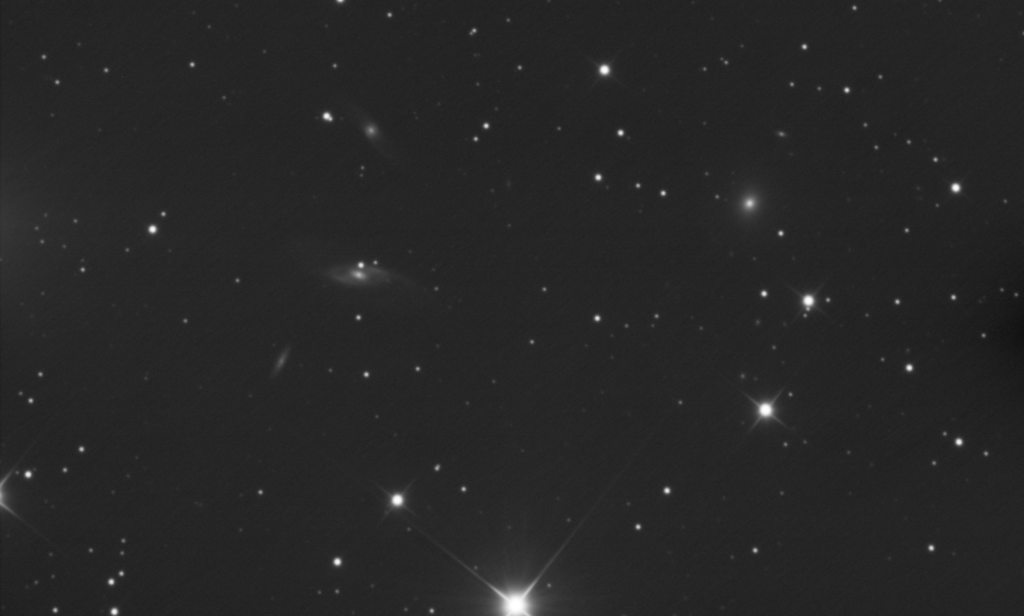
Located 3.5 degrees East and a little South of Beta And (Mirach) in Andromeda.
This group contains four NGC objects. From the East they are NGC542 ( Scd), NGC536 (SBb), NGC531(SB:0a) and NGC529 (E4) . I’m also picking up PGC169778 (E) just to the NW of NGC529. All of these are to the North of a 6.3 mag star HIP6702. All of these galaxies are in the distance range of 66 – 69 Mpc. Of the four component NGC galaxies, only one is an elliptical.
The two most interesting are NGC536. We are looking onto it at an angle. The bright core is stellar and has a fainter core that is elongated along the galaxy’s longest axis. I’m only seeing two spiral arms coming of the centra bar and thee extend out about 1.7 arcmin to the East and West.
The other is NGC 531 – another barred spiral, but we are looking at it at a much more oblique angle. You can see the two spirals coming out of the NW and SE sides of the bright core and extend about 40 arcsec
Total Integration Time: 885 sec
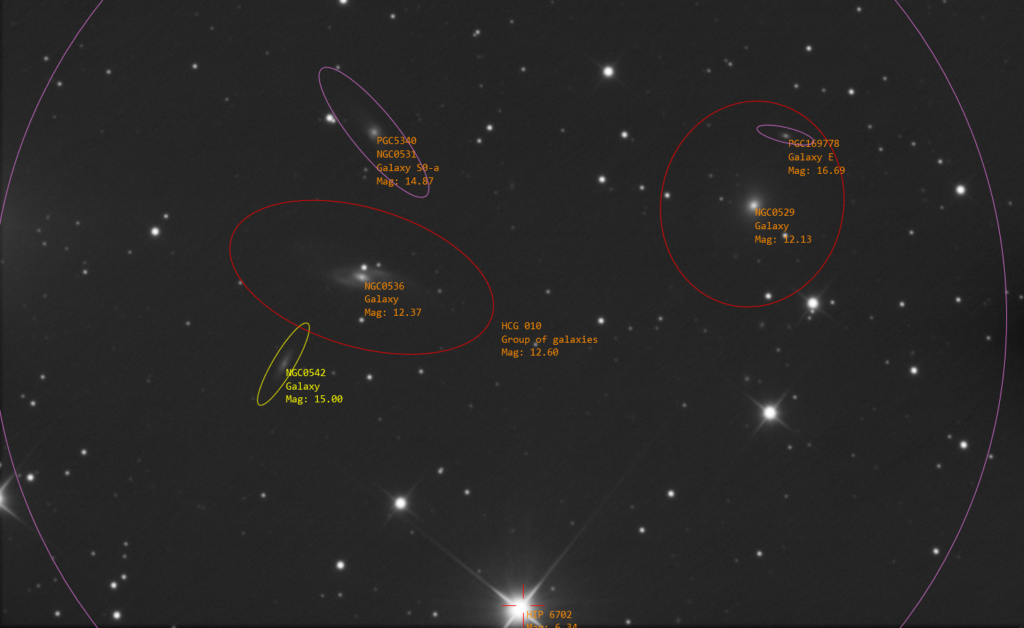
HCG30
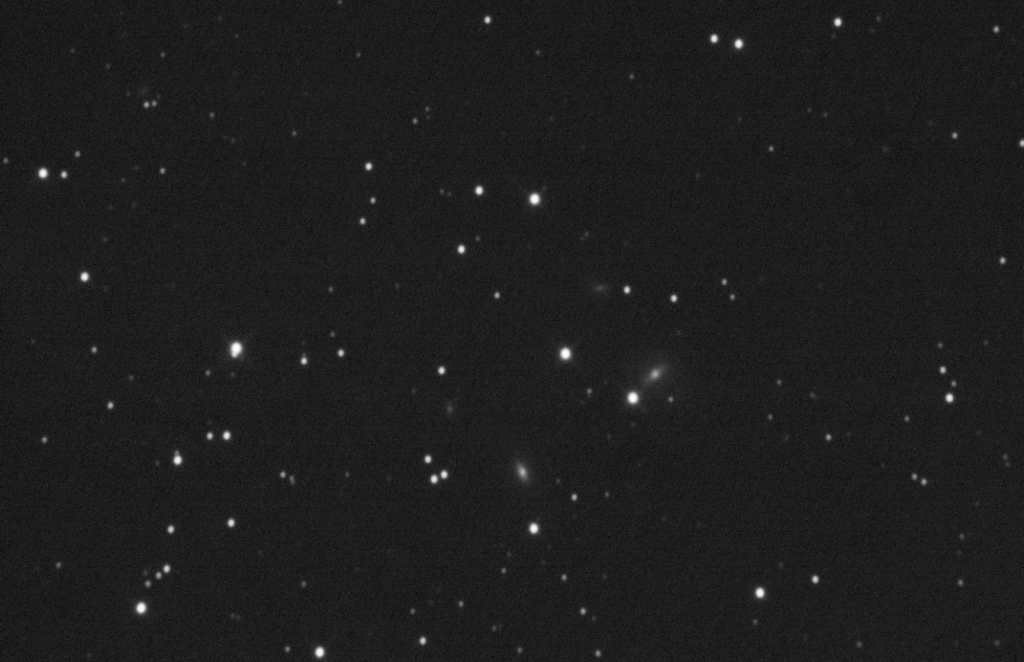
Located 31 arcmin North of Nu Eri in Eridanus.
This group contains four PGC objects. From the East they are PGC15636, PGC15631, PGC15624 and PGC15620.
PGC15624 is a barred spiral. All the others are regular spirals. They have an average redshift of 0.01553075 which is 62.825 Mpc.
You can just make out two faint 17th mag galaxies PGC108308 and PGC108348 in the two upper corners of the frame. There is a pretty chain of stars starting in the South-eastern corner and forming a short tailed ‘Y’ as they fan North.
Total Integration Time: 480 sec
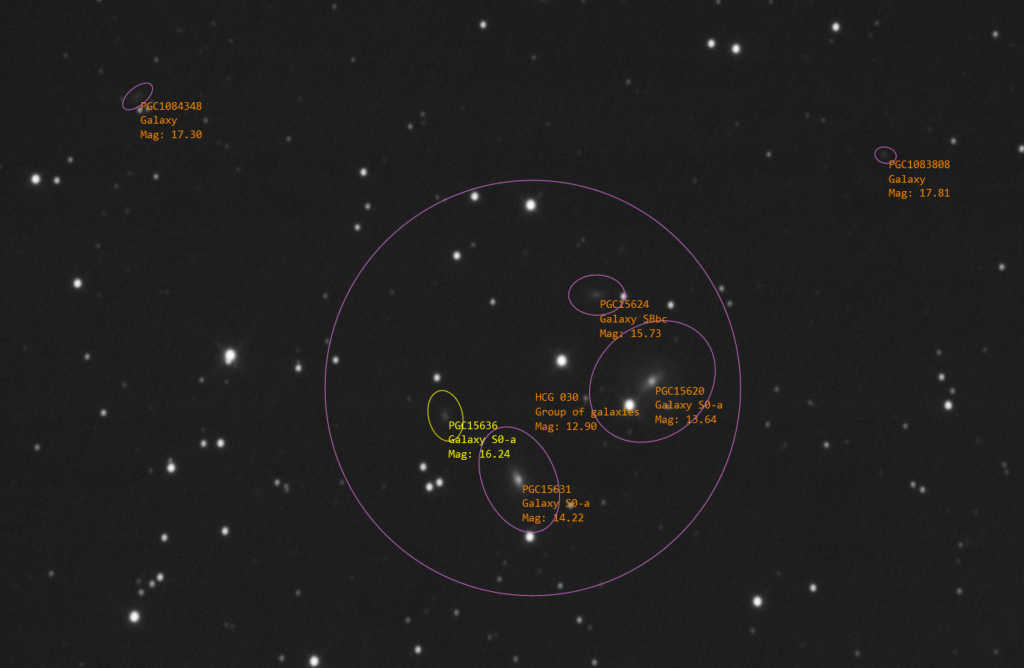
Total Integration Time: 480 sec
HT24, NHC1535
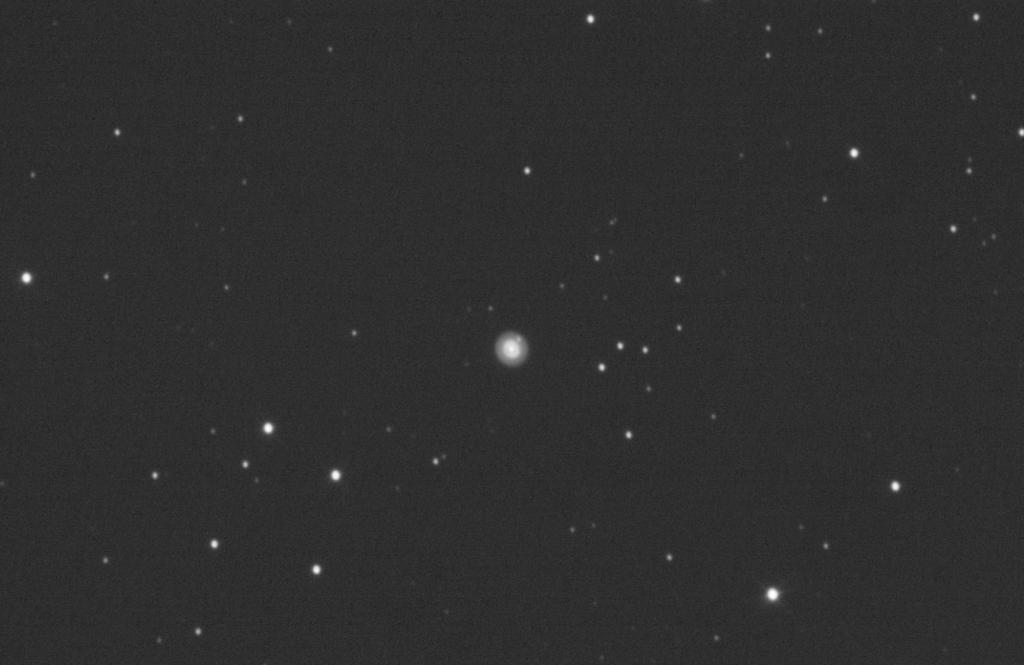
Located 4 degrees East and a little north of Gamma Eri in Eridanus.
A really pretty and symmetric planetary nebula. There is a bright core that is surrounded by a fainter annular ring. This ring is separated from the core by a darker area, so without looking at a Hubble image first, is probably the background sky partially showing through. Touching this ring is another adjacent fainter ring that extends about 20 arcsec from the core centre. Within the NW corner of this outer ring is the 14.6 mag star 4UCAC387-005182. Just to the West is an interesting arrangement of 13.2 – 14.5 mag stars.
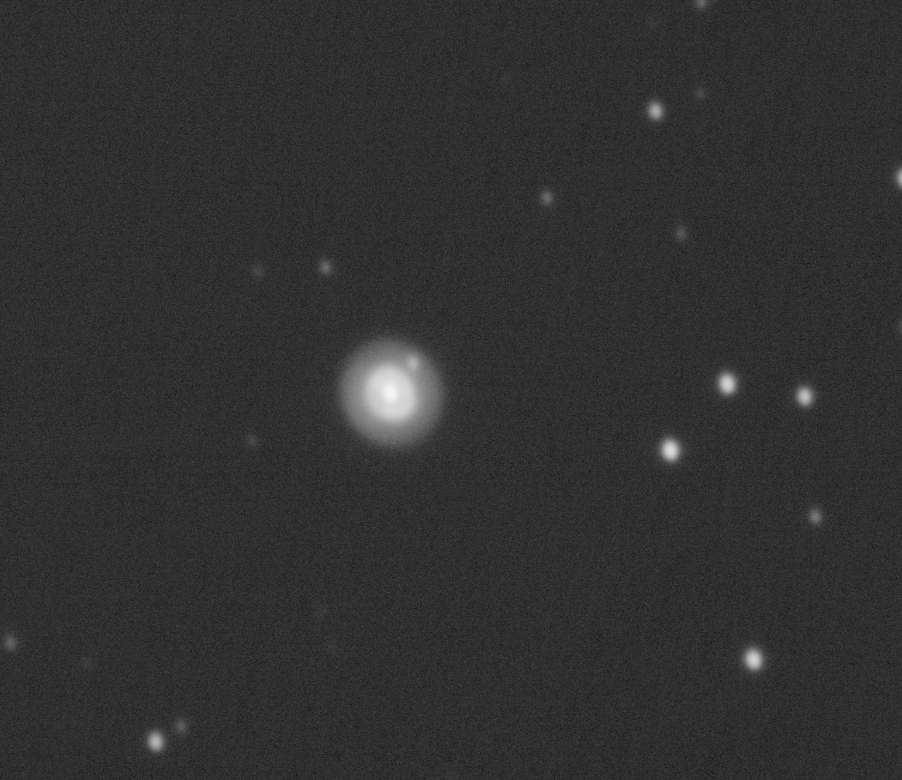
Total Integration Time: 450 sec
HT28, IC418
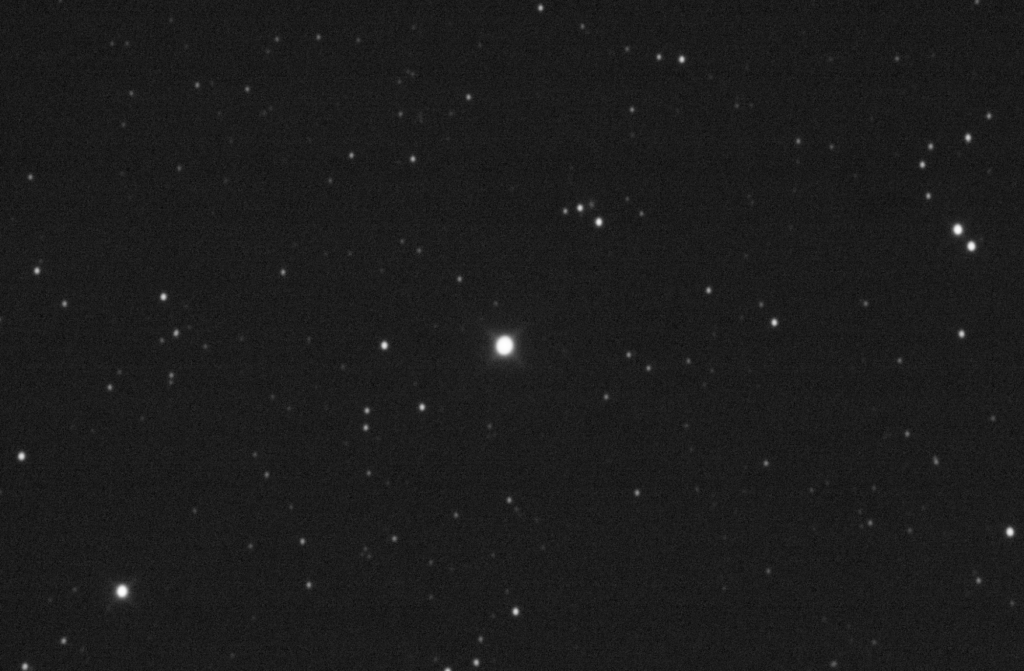
Located 5 degrees Northeast of Mu Lep in Lepus.
This was a complete waste of time observing. At 0.2 arcsec in diameter, I’m never going to resolve any structure in this. At the core is HD35914, a 9.6 mag O type star.
Total Integration Time: 270 sec
HT32, NGC1977
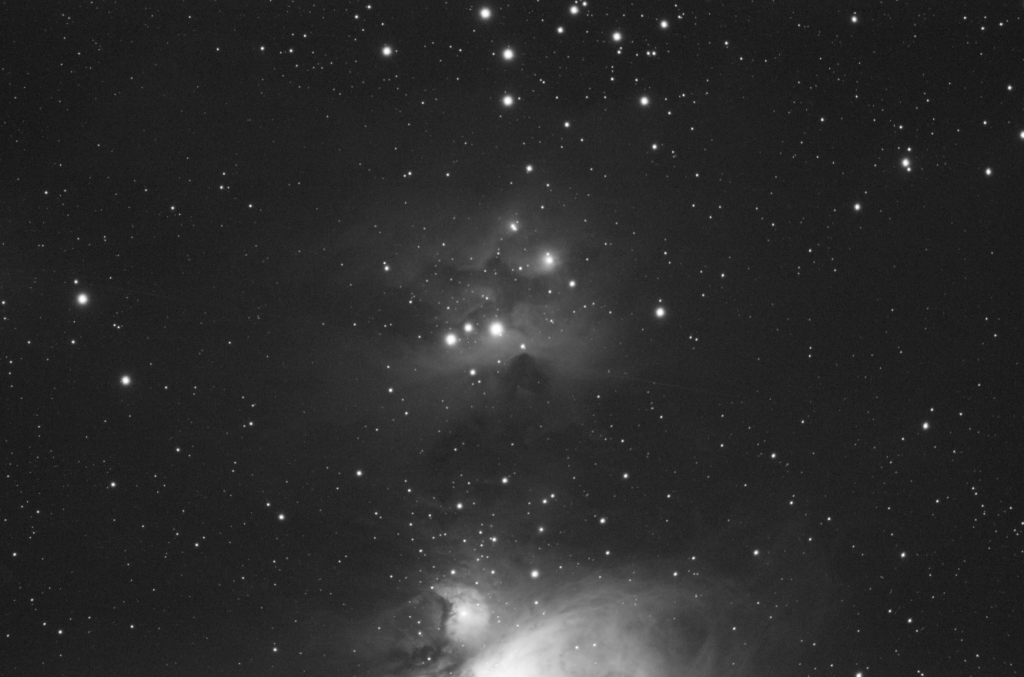
Located 32 arc mins North of M42.
I must be the only astronomer out there that has never taken an image of M42 or the Running Man for the purpose of creating a pretty picture. I guess it it’s so flogged to death that I’ve never really bothered. However, on seeing this I’m not so sure that was a good idea.
It’s not that NGC1977 isn’t pretty and you can quite plainly see the Running Man figure, but what shouted out at me on first seeing this 6 minute stack was the area of dark matter to the South of the running man figure. Is that a horse or dog head, that is detached from the faint remains of its body. I’ve never noticed this before.
As for the target itself, you can clearly see the stylised figure which reminds me of the Eros statue in Piccadilly Circus. The wings to the West with one foot and an arm to the East running along a darkened road that extends beyond the feet by about 30 arcmin.
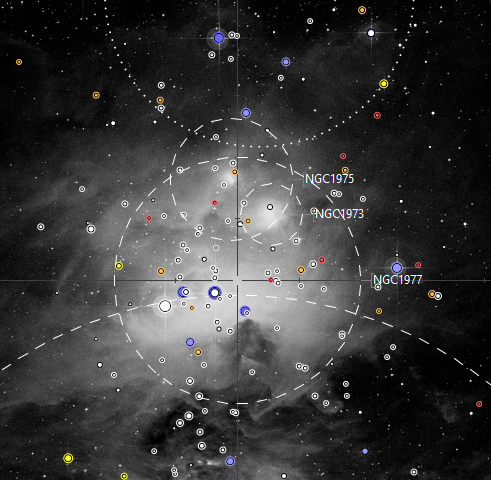
Within NGC1977 are two other NGC objects. NGC1973, which from my image looks like the nebulosity of gas that surrounds the star HD36958. Just to the West of this is a vertical band of dark dust silhouetted by the brighter nebulosity behind it. As with all these illuminated dust here, this is reflected light, rather than emission for the most part I think.
5 arcmins to the North of the head of the Running Man is NGC1975. This seems to be a slightly brighter area of gas and dust that centres on 3 variable stars. V2303 Ori, V2303 Ori and V2303 Ori. At this stage I have no idea if these are the illumination source.
Total Integration Time: 360 sec
HT30, NGC1981
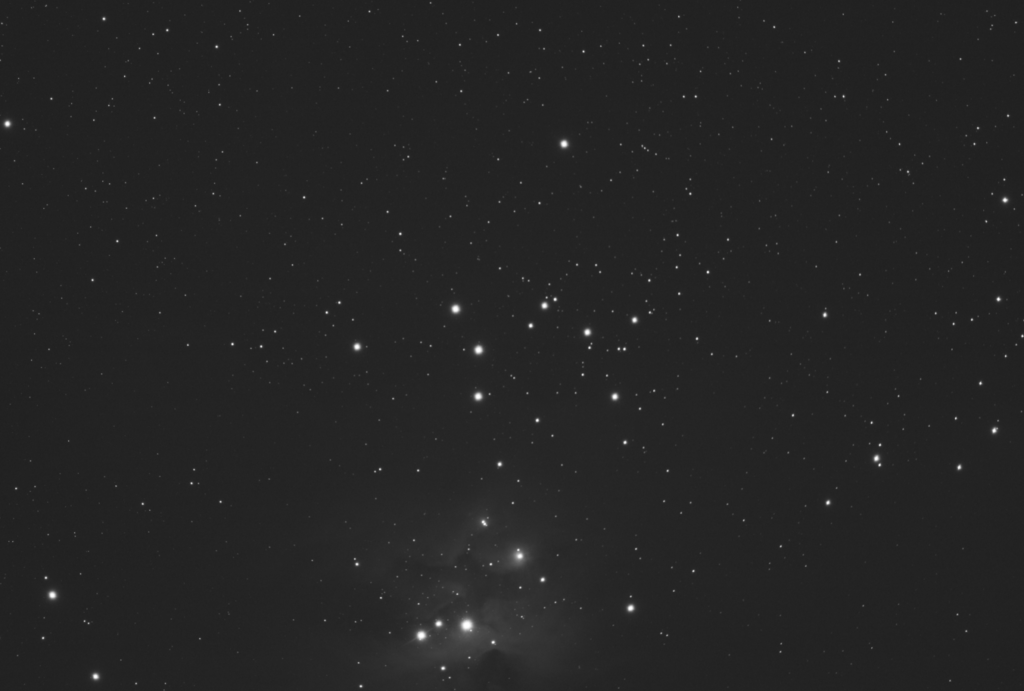
Located 26 arcmin North of th Running Man nebula NGC1977.
Astroplanner shows NGC1981 covers a diameter of 25 arcmin across and contained within this are 7 stars of between 6 and 8 mag. If you use your imagination, it looks a little like the constellation Sagittarius.
Total Integration Time: 135 sec
HT31, NGC1980
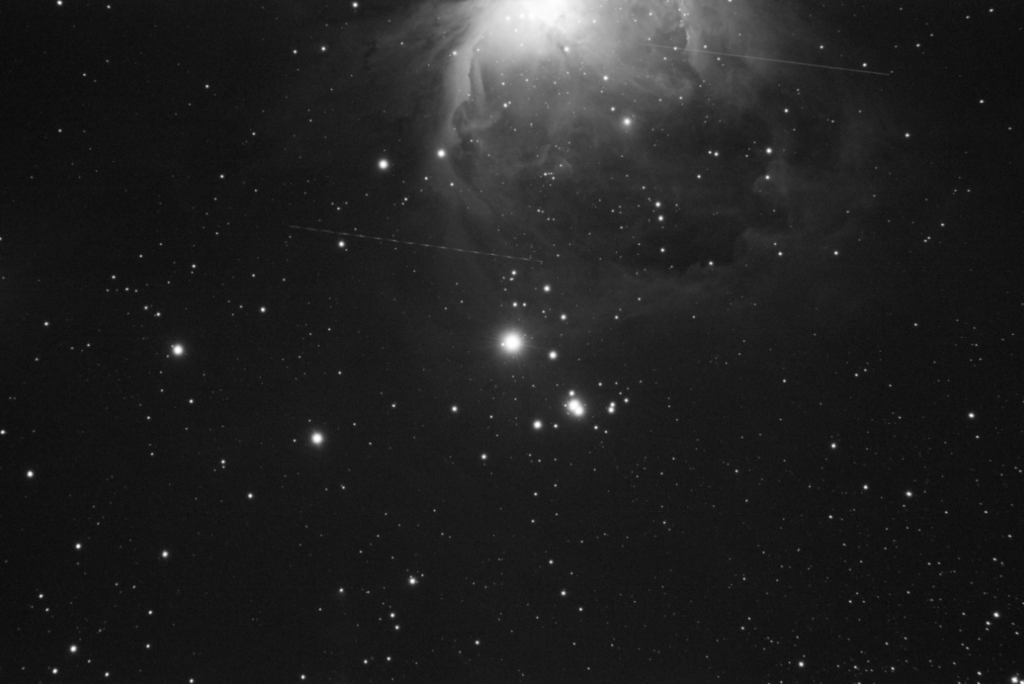
Located 30 arcmin South of M42.
A small 12 arcmin cluster embedded within the outer reaches of M41. Three very bright stars dominate here. The 2.7 mag Iota Orionis at the centre which is also known as Struve 752 which is a triple star system The two other components are Struve 752B 7.7 mag and Struve 752C 10.0 mag. I cannot make out the B component as the light of this is dwarfed by the principle star, but I can see the c component in the image. The separation of these two is 50 arcsecs.
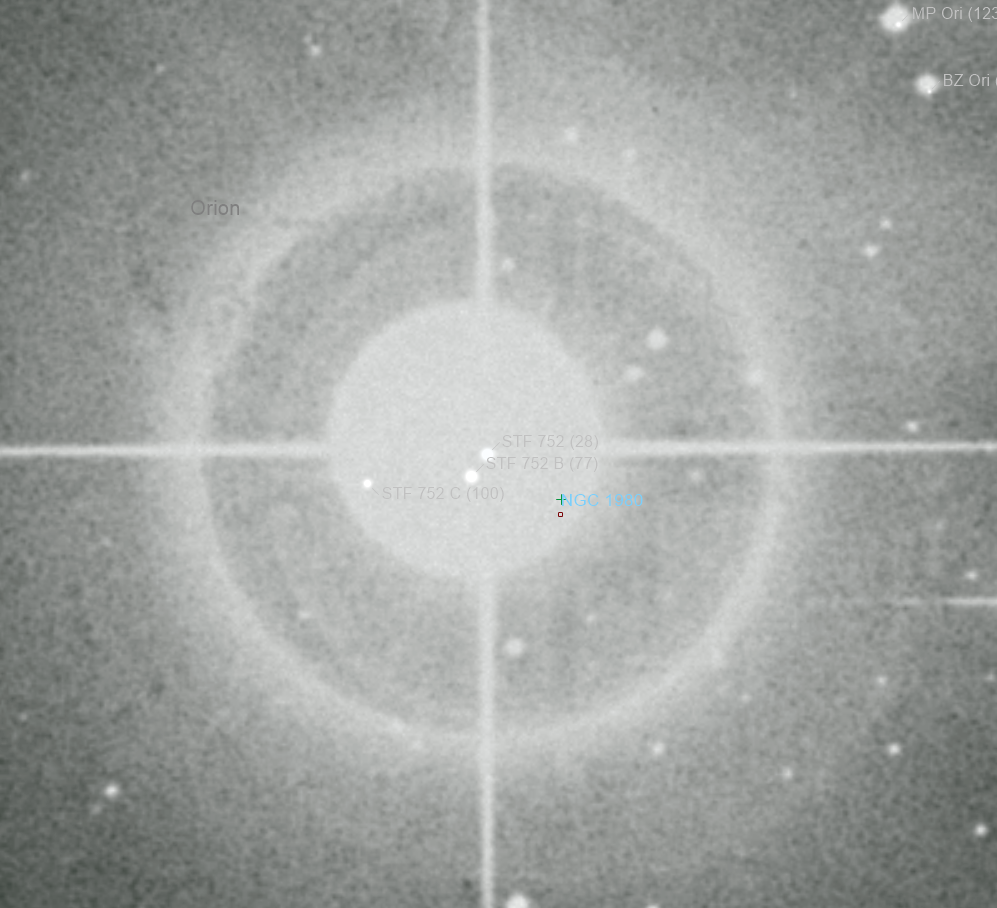
Off to the SW of Iota Orionis is HD36960 4.8 mag and HD36959 5.6 mag. These look like a double, but only visually as there are 1614 Ly and 2695 Ly distant respectively.
There is a line of stars that looks like a scythe with a short blade that starts North of Iota Orionis curving to the West and then South all the way to the bottom of the frame.
Total Integration Time: 90 sec
HT45, NGC2539
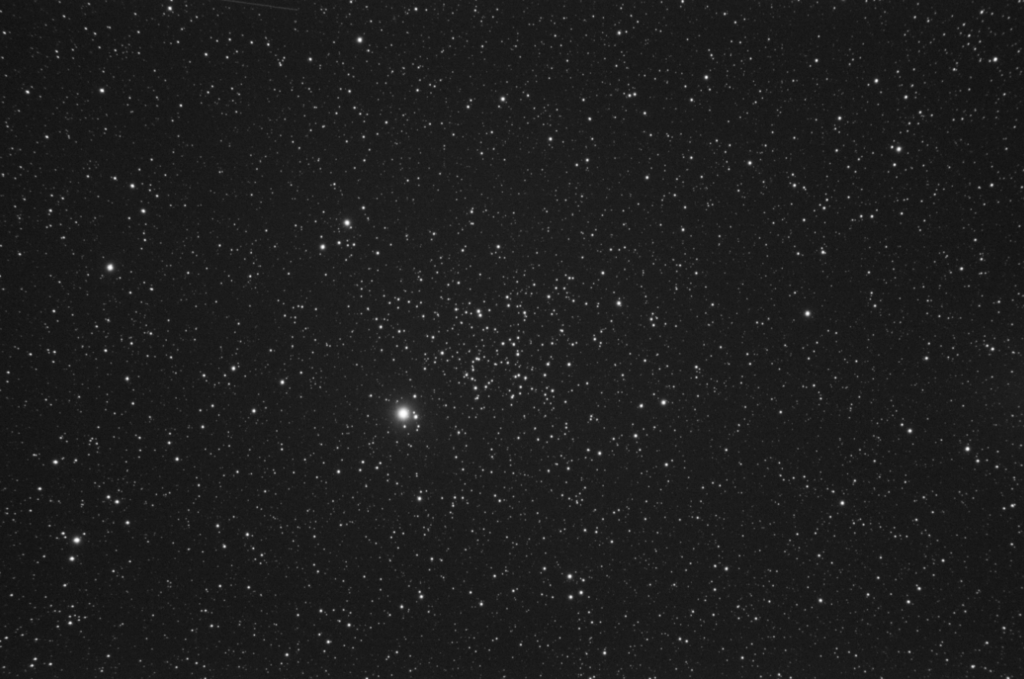
An open cluster 11 degree North of Rho Pup.
The field is dominated by the 4.7 mag star 19 Puppis. The cluster is quite tight and easily seen against the busy background. It takes on a flat topped triangular shape and is orientated East/West . The brighter components are in 10.5 to 11.5 mag range. Simbad provides a parallax of 0.754 mas which give a distance of 1326 parsecs
Total Integration Time: 120 sec
HT33, NGC1999
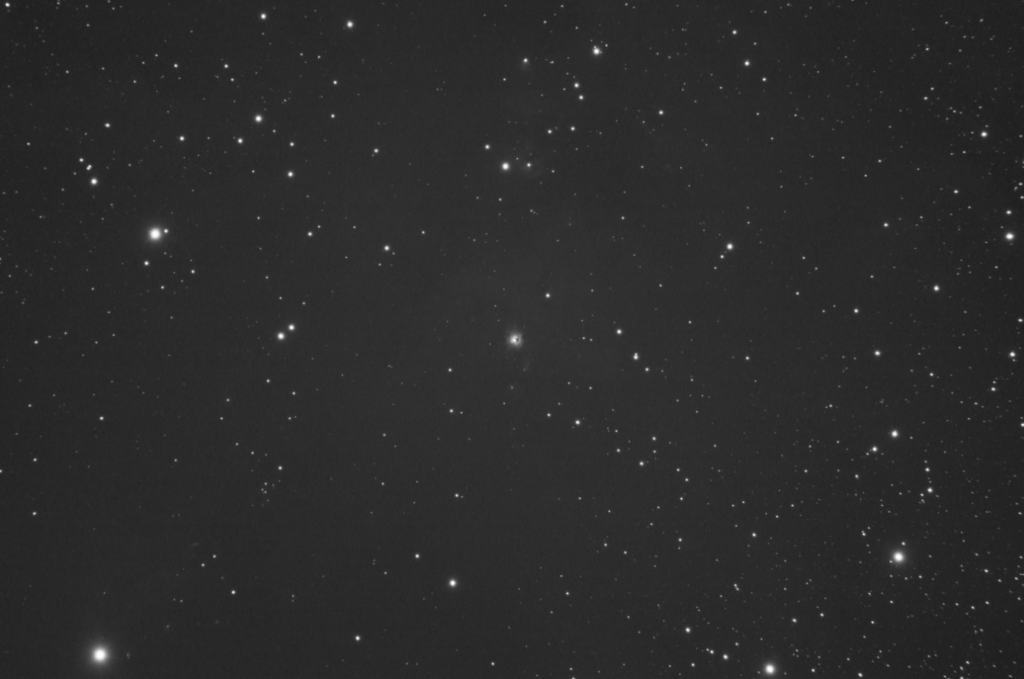
Located just over a degree South and a little East of M42 in Orion.
I should have used an H-alpha filter on this as I’m barely making out any of the nebula features that extend outwards to its 16 arc min diameter. However after 7 minutes of integration you can see 2/3rds of the frame is filled with structure.
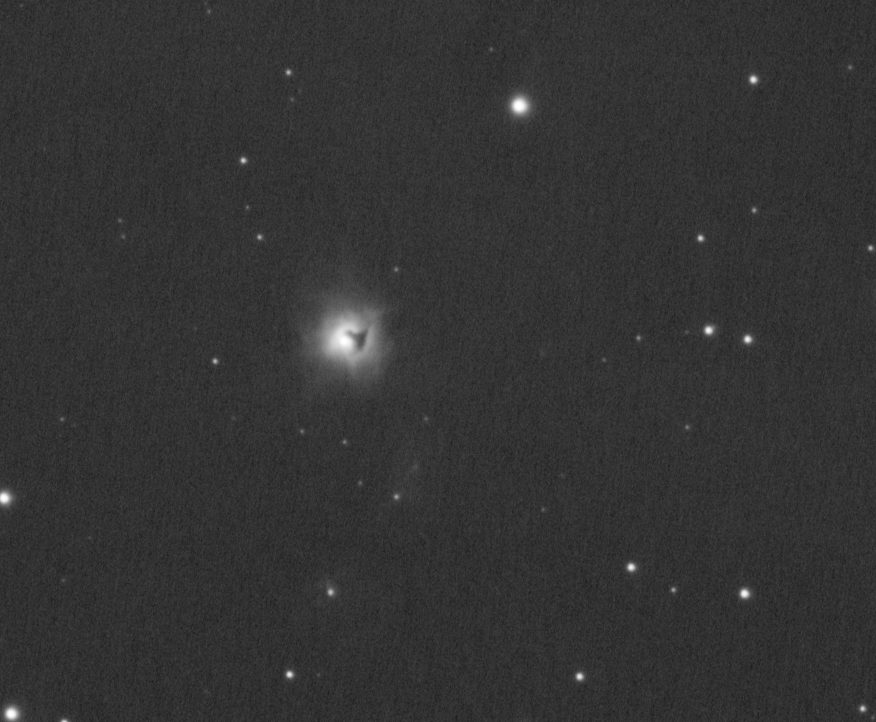
The core however is visible, but small at 3.2 arcmin in diameter. Silhouetted against the very bright ionised background is a cloud of obscuring dust that looks like a chess pawn laying on its side.
The brightest object in the frame is the 4.8 mag star D Orionis in the SE corner.
Total Integration Time: 465 sec
Comet 29P/Schwassmann-Wachmann
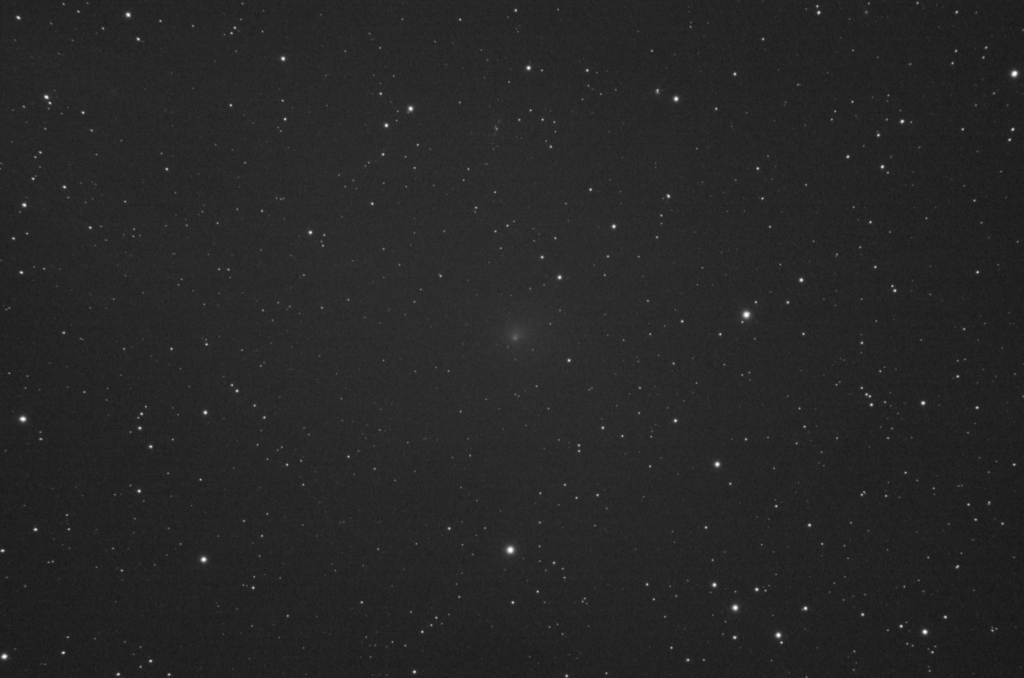
I’m constantly gobsmacked by the accuracy of comet coordinate prediction for a specific date and time of day, when I overlay then on a plate solved image displayed in a piece of software ( Sharpcap) that only costs me £12 a year to use. The ephemeris calculation from MPC places the target crosshairs slap bang on top of the comet in the image. Just amazing.
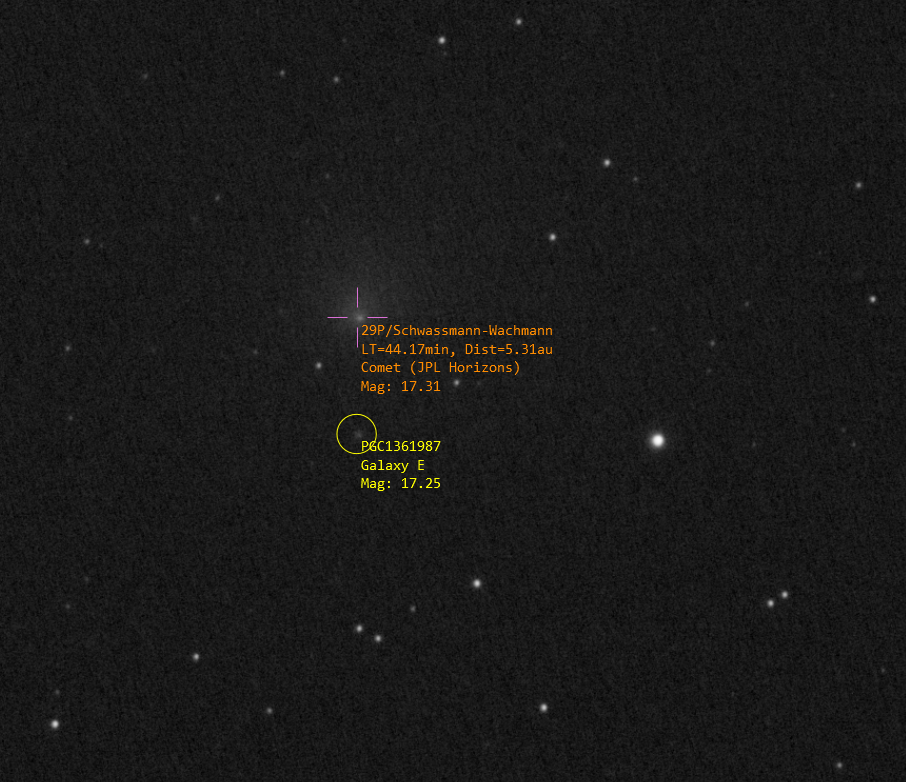
There isn’t any evidence of a tail here but I can just make out a faint coma which extends to the North. I can also make out the fuzzy blur of galaxy PGC1361987.
Total Integration Time: 285 sec
Asteroid 29 Amphitrite
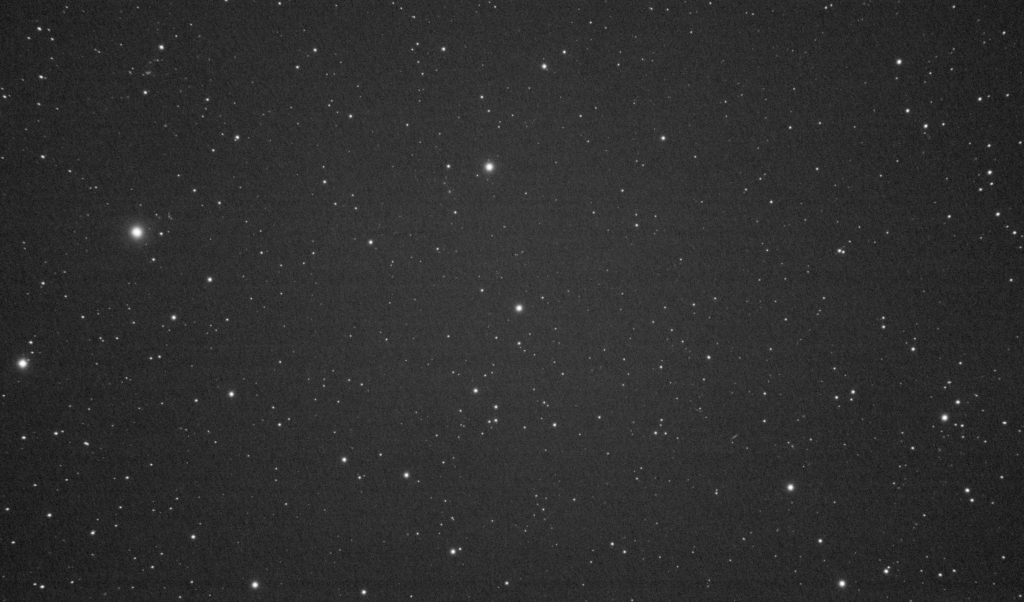
The Asteroid 29 Amphitrite discovered in 1854 by Albert Marth from the observatory owned by George Bishop in Regents Park of all places.
I took a stack of 40 x 15sec images and created a movie of its track across the sky during that 14 minutes. As you can see it’s not moving much in that time – only 37.2 “/hr @ PA 283.0°.
Basic Stats 4.08 orbital period, An almost circular orbit of 0.073 which apparently unusual, A diameter estimated between 190–215 km with a rotation period of 5.39 hours. With an albedo of 0.21 it’s one of the brighter asteroids which at the time I observed it was 9.3 mag.
Interestingly, this asteroid could have been visited by a flyby of the Galileo mission if that had been launched in may of 1986. However the Challenger disaster in January of that year, meant the flyby never happened, when the launch finally went ahead in October 1989.
The only other DSO I can see on the 10 minute stack is PGC29058 a 15.8mag barred SBc type spiral.
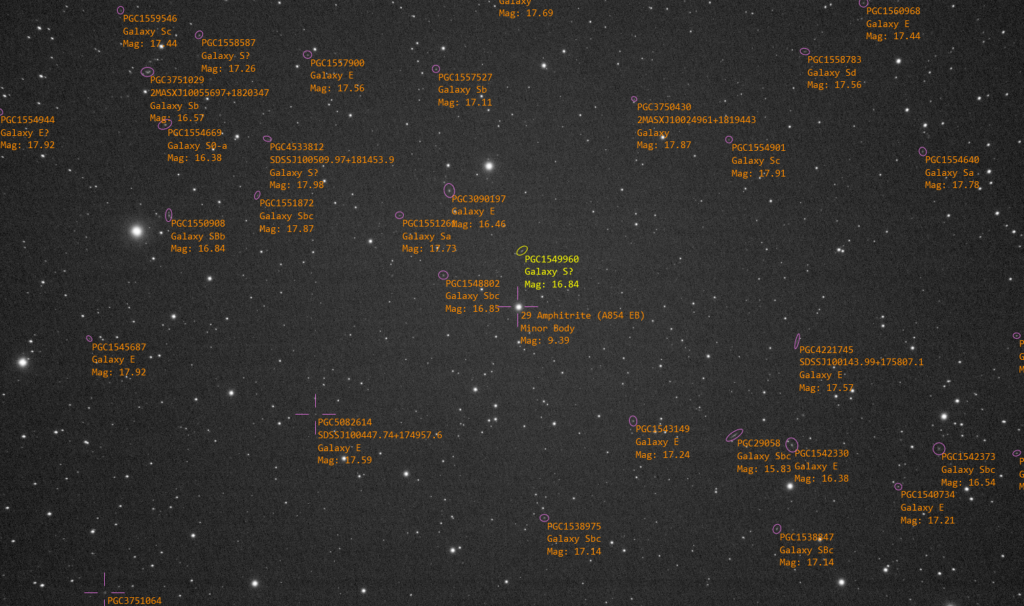
Total Integration Time: 600 sec